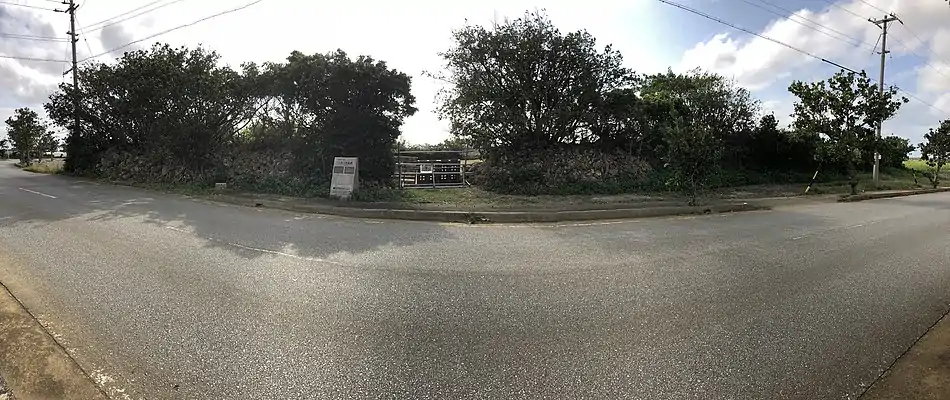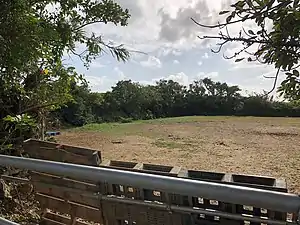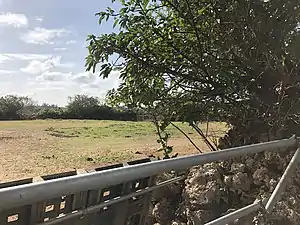24°43′51″N 125°18′00″E / 24.730904°N 125.299957°E
| Kubaka Castle 久場嘉城 | |
|---|---|
| Miyakojima, Okinawa | |
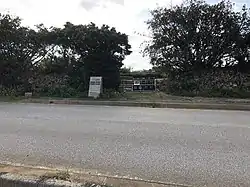 Main gate of Kubaka Castle | |
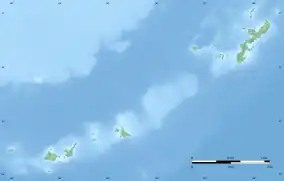 Kubaka Castle 久場嘉城  Kubaka Castle 久場嘉城 | |
| Type | Gusuku |
| Site information | |
| Owner | Private owner |
| Controlled by | |
| Open to the public | Exterior only |
| Condition | Ruins |
| Site history | |
| Built | before 16th century |
| Built by | Kubaka Aji |
| In use | before 16th century-18th century |
| Materials | Ryukyuan limestone, wood |
| Garrison information | |
| Occupants | Kubaka Aji, Fumon Koujin |
Kubaka Castle (久場嘉城, Kubaka jō, Okinawan: Kubaka Gushiku) is a Ryukyuan gusuku located near the shore of Irie Bay in southern Miyakojima, Okinawa, in former Ueno Village. It is the only castle on Miyako Island where the original castle layout is still visible.[1]
History
The castle was built sometime prior to the 16th century. It was ruled by the Aji of Kubaka. The castle was 56.4 metres (185 ft) long and 45.5 metres (149 ft) wide with the gate facing southwest.[2]
There is a legend that a merchant from Ryukyu named Tamagusuku fell in love with Koujin, daughter of the Lord of Kubaka Castle, and the two had a son. After returning from a trip, Tamagusuku overheard Koujin refer to him as an “exile” or “wanderer” while talking to their son. He told her that he was an important trader, then grabbed the boy and took him to Okinawa where he would grow up to be a Lord himself. Koujin then wandered on the shore near the castle praying for death, until one day a tsunami washed her away.[3][4]
Gallery
References
- ↑ Miyakojima City. “The Remains of Kubaka Castle”. 11 December 1995, Plaque.
- ↑ Miyakojima City Board of Education. “【Designated by the City:Historic Site】Remains of Kubaka-jo Castle”. 2014, accessed 2 February 2020, https://miyakojimabunkazai.jp/en/bunkazaiinfo160/
- ↑ Kerr, George. Okinawa: History of an Island People. Tokyo: Tuttle Publishing, 1958. Page 120.
- ↑ Miyakojima City Board of Education. “【Designated by the City:Historic Site】Koujin Migagama Utaki Sacred Site”. 2014, accessed 02 February 2020, https://miyakojimabunkazai.jp/en/bunkazaiinfo855/
